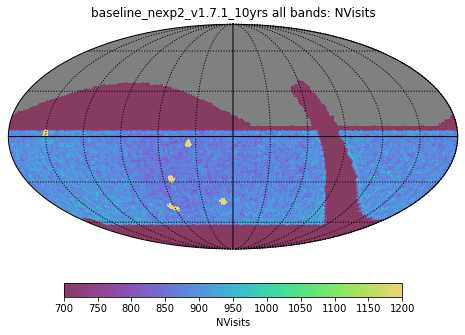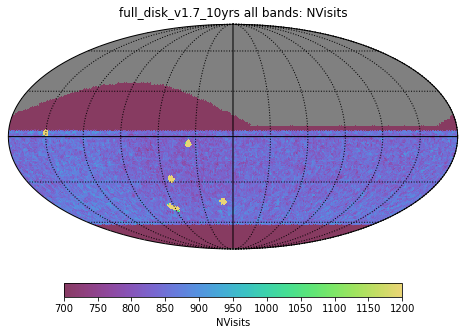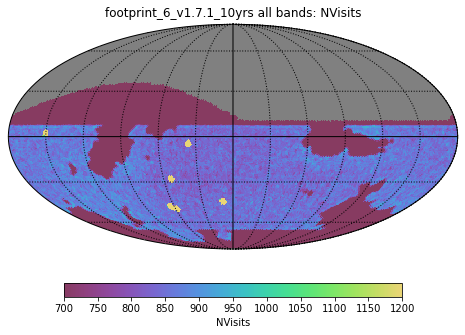In response to a request for additional simulations from the TVS and SMLV collaborations approved by the SCOC, we have a few additional simulations that you may optionally consider when submitting your Cadence Notes. I know that some collaborations are fairly close to finished with their Cadence Notes – it is absolutely not required to consider these runs for submitting those notes. However, for some science cases particularly relevant to the TVS and SMWLV collaborations, investigating rolling cadence in simulations with denser coverage near the Galactic Plane was a necessity (and not included to any great extent in the previous simulation releases, which demonstrated rolling cadence on a traditional survey footprint with little coverage near the Galactic Plane).
You may also find these simulations useful because they demonstrate additional fine-tuning of the rolling cadence, over a variety of footprints. They demonstrate an improvement in our rolling cadence algorithms which should hopefully do much better at reducing the inter-night gap during rolling seasons.
V1.7.1 Simulations
This is a limited set of 10 simulations, exploring the impact of rolling cadence on three different footprints. The footprints include:
- a traditional survey footprint (a traditional WFD identical to the baseline)
- a survey footprint with a simple dec-limited WFD (a WFD ‘stripe’ similar to ‘footprint_gp_smooth’ from the v1.5 footprints family called ‘full_disk*’ here)
- a survey footprint with a dust-extinction limited WFD coupled with WFD-level visits across the Galactic Bulge and a high-galactic-longitude ‘bridge’ (footprint_6 from the v1.7 footprints_tune family)



For each of these footprints, we add simulations where there is a 2-dec-band rolling cadence and a 3-dec-band rolling cadence; for the baseline survey footprint, there is an additional 6-dec-band rolling cadence.
All of these simulations are grouped under the new rolling family and make up the v1.7.1 release.
Please note that while several of these simulations use footprints identical to or similar to simulations in previous releases, as always - metric results should be compared to the relevant runs from the same release (i.e. baseline_nexp2_v1.7.1_10yrs is the generic standard here, although to evaluate the impact of rolling on each footprint you may wish to compare to the same footprint without rolling). This is particularly important in this update, as we have also updated the throughput values to current values – this resulted in slightly deeper per-visit magnitude limits in u band, although other bandpasses are generally consistent. We also hope that the impact of rolling cadence in this release is improved over previous releases, due to updates in the rolling cadence algorithm.
As always, you can find the MAF outputs at
http://astro-lsst-01.astro.washington.edu:8081/
and the databases can be downloaded from
https://epyc.astro.washington.edu/~lynnej/opsim_downloads/fbs_1.7.1/
The SummaryInfo (alternate viewing location) notebook has been updated, and there is a new summary metric CSV file available with summary stat outputs from these runs as well as previous runs*.
*the updated CSV file (all_summaries_2021_04_07.csv) now does include solar system metric outputs.